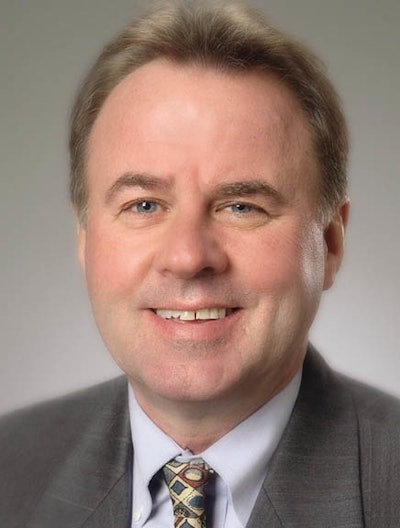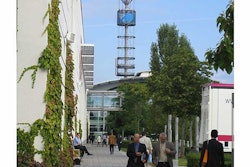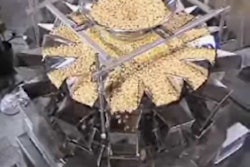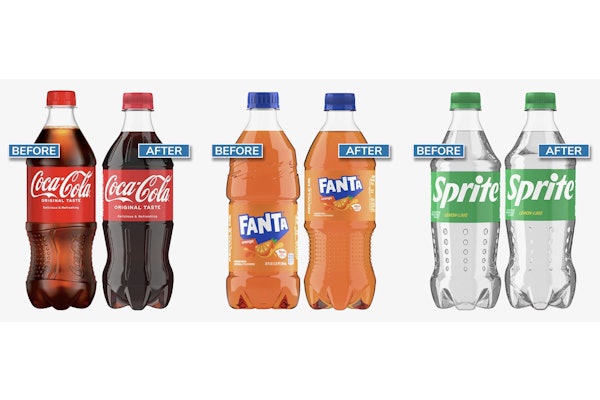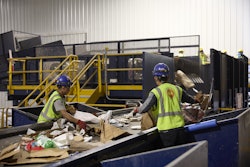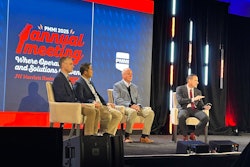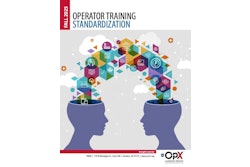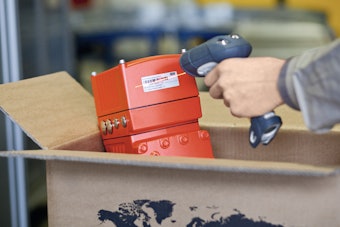No matter where you are or what business you’re in, you’re getting battered with environmental or green messages from every information source imaginable. It’s not going to stop any time soon, either. But maybe that’s a good thing.
A renewed and refreshed corporate model focused on economic, social, and environmental principles, often called the Triple Bottom Line (TBL), is fast becoming the new mainstream business model. And it’s focused on the right stuff: people, planet, and profitability. Isn’t that what makes the world go round? Why not help it go round for generations to come?
We packaging professionals shouldn’t be too surprised by all the fuss over sustainability. Think about the real or perceived packaging crises we’ve weathered in the past few decades, from litter in the ’60s to oil and energy in the ’70s to solid waste in the ’90s. In many ways, these foreshadowed today’s concern about sustainable packaging.
What makes us such a lightning rod where these issues are concerned? Why does this happen to the packaging industry when in fact our contribution to such problems is really very minor? The answer is fairly simple: It’s because we are so visible. After all, what doesn’t come in a package? The packaging sector is a huge target, representing $450 billion globally.
So whether we like the attention or not, maybe it’s time to view the sustainability hubbub not as a crisis but rather as an opportunity. After all, we can make a significant difference and a positive impact on the future of society.
First we need to get re-educated, beginning with terminology. Figure 1 identifies more than 20 terms that are a part of the new lexicon in sustainability and sustainable packaging. Are you familiar with these?
Once we understand how important TBL has become and that a working knowledge of the new terminology is essential, we must adopt a new approach to the package development process. This new approach should start at the back. We need to think Cradle-to-Cradle; we need to think Design For the Environment; we need to think Design for Recovery. By rethinking the process and significantly elevating TBL in our thought patterns, packaging will be able to make significant progress, resulting in new innovations.
Across the value chain, packaging will become a new and recognized leader and implementer of TBL practices, and it will lead to game-changing solutions. The packaging value chain is already hard at work and starting to make a difference.
Consider the changes we’re seeing, and keep in mind that these changes are not confined to any single level of the value chain:
• Raw material suppliers: Efforts here range from developing new ingredients and components to improving bio-materials and developing new materials from renewable resources. Look for continued advances from this component of the value chain and look for raw material suppliers to take a leadership role in sustainable packaging.
• Converters: New inroads are made as converters offer new materials and programs on sustainable packaging. Converters are also developing unique new business propositions that provide package waste-to-value solutions to reduce material waste going to landfill and bring new revenues to brand owners. Consider, for example, the new Sonoco Sustainable Solutions business, S3™, which is focused on waste reduction and waste-to-value creation.
• Brand owners: Consumer Packaged Goods (CPG) companies are developing new departments and organizations to more effectively tackle this new TBL opportunity. Efforts are going beyond remove, reduce, and increase recycled content to more holistic and system-wide solutions that also increase use of renewable energy and decreased carbon footprints. Look for a few brand owners to deliver game-changing packaging solutions in the not-too-distant future that offer a combination of maximum shelf impact and packaging sustainability. CPG companies are currently seen as the leaders, with Pharma and Medical-Device lagging a bit due to the exceedingly regulatory nature of their business. However, this is a great opportunity for the Pharma and Medical-Device crowd to make a statement and move toward more sustainable packaging.
• Retailers: Retailers are playing a leadership role and the focus is on waste and energy reduction. While legislation has been the driver outside the U.S., Wal-Mart has been the recognized leader in the U.S. via their sustainable Value Network and the Sustainable Packaging Scorecard. Look for strong leadership across retailers in the U.S. and abroad in the coming years. And look for Private Label players to also make their presence known in the sustainable packaging arena.
Moreover, you can expect to see retailers other than Wal-Mart adopt the TBL philosophy to drive new sustainable packaging value solutions forward in new and creative ways. And you can expect to see a continuing struggle between the need for packaging to have powerful shelf impact and the need for packaging to be truly sustainable—even though these needs can be inherently contradictory.
The role of DFE
One bit of advice you should take to heart is that if you think about Design for the Environment (DFE) at the beginning of the process, you will have a better chance for success. Consumers, for the most part, are not focused on sustainable packaging/green/environment. Remember, consumers buy products, not packages. Most are focused on taste, convenience, health, nutrition, and time savings—not to mention price. While there is a sizable portion of the U.S. population that is green-focused (the Natural Marketing Institute suggests it’s about 17%), most consumers are not yet green thinkers or doers.
This will change over time, and we need all the players across the packaging value chain to contribute toward sustainable packaging education. Look for more consumers to get on board in the coming years, and look for the packaging value chain to step up education efforts.
There are many other parts of the packaging value chain that are making significant contributions, including nongovernmental organizations, packaging trade organizations, packaging publications, trade associations, consultants, design firms, engineering firms, and so on. And let’s not forget the sustainable Packaging Coalition (SPC), which now has more than 170 member companies. It’s a recognized leader and has developed both definition and design guidelines for Sustainable Packaging. SPC is also currently working on a sustainable packaging development course that will be rolled out in 2008.
Trade organizations are also stepping up their efforts in this area. The Packaging Machinery Manufacturers Institute, for example, has been adding sustainability to its agenda at regularly scheduled meetings. Meanwhile, the Flexible Packaging Association has developed a comprehensive initiative around the topic to help their membership be more prepared to respond to the new challenge and opportunity. They even developed a Wal-Mart Scorecard training program for their membership to help with the 2008 Wal-Mart Scorecard initiative. Similar work is underway at the Institute of Packaging Professionals, where a section on sustainable packaging has been added to IoPP’s popular Fundamentals of Packaging course.
And this just in from China: Soon to surface is sweeping legislation governing all aspects of China’s packaging, waste, and recycling industries. Officially called “Method for administration on recycling packaging materials,” this legislation will have a profound impact on the global packaging value chain. It’s also one more sign that the world is indeed flat.
Look to see more focus on sustainable packaging in the future across all parts of the packaging value chain, which, by the way, is undergoing some significant changes (see Figure 2). TBL will be a key driver in the future. Sustainable packaging will continue to gain momentum in the coming year by providing wins for companies, people, and, yes, the planet—even the part of the planet called China.
Editors Note: Michael Richmond is president of Packaging & Technology Integrated Solutions and co-founder of Global Sustainability Solutions, Inc. Mike can be reached at [email protected].
